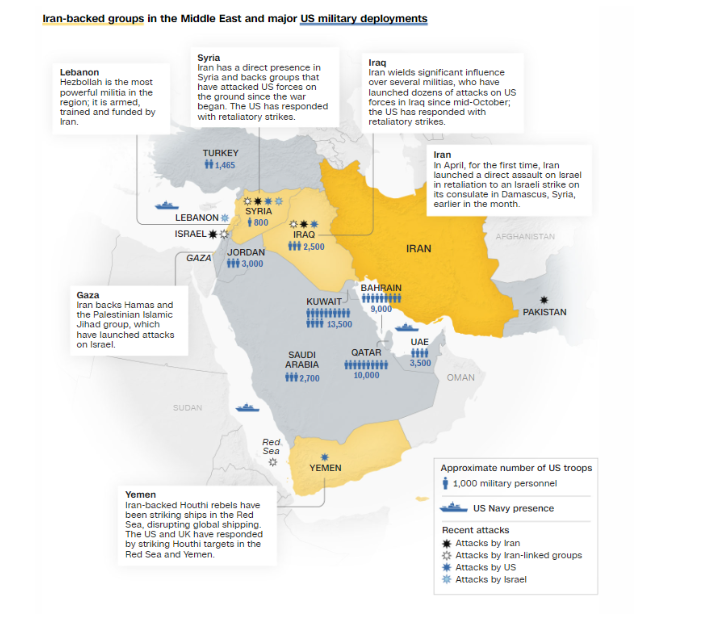3 October 2024 : Indian Express Editorial Analysis
1. A mission’s next step
(Source: Indian Express; Section: The Ideas Page; Page: 09)
| Topic: GS3– Science and Technology |
| Context: |
| The article highlights India’s rapid advancements in Cyber-Physical Systems (CPS) driven by the National Mission on Interdisciplinary Cyber-Physical Systems (NM-ICPS), which has fostered innovative technologies, startups, and infrastructure to establish India as a global leader in this field. |
What are Cyber-Physical Systems?
- Cyber-physical systems integrate sensing, computation, control and networking into physical objects and infrastructure, connecting them to the Internet and to each other.
Applications:
- Driverless cars that communicate securely with each other on smart roads,
- Sensors in the home to detect changing health conditions
- Improving agricultural practices and enabling scientists to address issues arising out of climate change, etc.
Significance:
- Advances in cyber-physical systems will enable capability, adaptability, scalability, resiliency, safety, security and usability that will far exceed the simple embedded systems of today.
National Mission on Interdisciplinary Cyber-Physical Systems (NM-ICPS)
- Launched by the Indian government in December 2018 with a substantial budget of Rs 3,660 crore, NM-ICPS stands apart through its emphasis on translational research—the process of transforming research into practical applications.
- The mission’s goal is to foster breakthroughs that meet national priorities, particularly in advanced technologies like AI, machine learning (ML), robotics, and cybersecurity.
- Through this initiative, India aims to establish itself as a global leader in CPS technologies.
Translational Research and Innovation Hubs
- What distinguishes NM-ICPS from similar initiatives is its focus on innovation through the creation of Technology Innovation Hubs (TIHs). These hubs, located in 25 research and educational institutions across India, operate as separate entities to provide greater operational freedom.
- Their mandate is to convert existing research into market-ready products. This approach has yielded impressive results, with over 1,500 new technologies and products being developed, leading to the establishment of more than 650 startups and the creation of over 16,000 jobs.
Notable Innovation Hubs and Projects
Several TIHs have contributed to India’s growing technological infrastructure:
- C3iHub at IIT Kanpur: Developed an IT-OT Security Operations Center (SOC) to protect critical infrastructure, such as power grids and water treatment systems, from cyber threats. This system has proven to be 3x-5x more cost-effective than larger competitors.
- TiHAN Foundation at IIT Hyderabad: Focuses on autonomous navigation for both aerial and terrestrial systems. Its testbeds support cutting-edge research in Autonomous Ground Vehicles (AGVs) and Unmanned Aerial/Surface Vehicles (UAVs/USVs).
- AWaDH at IIT Ropar: Developed the world’s first “Digital Entomologist”, a breakthrough in sustainable agriculture, along with solar-powered biodiversity sensors to monitor farms across multiple countries.
Startups Emerging from NM-ICPS
The mission has also spurred a surge in innovative startups. For instance:
- Botlabs Dynamics commercialized drone-swarming technology for defense and entertainment sectors, achieving a valuation of over Rs 160 crore.
- COMRADO Aerospace is developing cost-effective UAVs capable of operating in extreme weather conditions for military applications.
- Mindgrove Technologies created India’s first commercial System-on-Chip (SoC) for secure IoT environments, significantly advancing the country’s semiconductor capabilities.
Future Prospects for NM-ICPS
- Looking forward, the innovation hubs under NM-ICPS are expected to transition to financial autonomy through commercial partnerships. Indian industries will play a critical role in co-funding and collaborating with these hubs to drive further innovation.
- A new initiative under the mission, “Generative AI for Bharat”, will aim to develop foundational AI models for multiple Indian languages, advancing India’s capabilities in AI and multimodal technologies.
Conclusion: India’s Leadership in CPS
- The NM-ICPS initiative has already made significant strides in advancing India’s technological capabilities, contributing to economic growth, self-reliance, and societal well-being.
- By merging the digital and physical worlds, India is positioning itself as a global leader in Cyber-Physical Systems, with far-reaching impacts across various sectors such as defense, healthcare, agriculture, and infrastructure.
| Practice Question: Discuss the role of the National Mission on Interdisciplinary Cyber-Physical Systems (NM-ICPS) in advancing India’s technological capabilities and fostering innovation. How has it contributed to the development of critical infrastructure, startups, and India’s global positioning in Cyber-Physical Systems (CPS)? (250 words/15 m) |
2. A mirage called peace
(Source: Indian Express; Section: The Editorial Page; Page: 09)
| Topic: GS2– International Relations |
| Context: |
| The article analyzes the escalating violence in the Middle East, focusing on Israel’s multi-front conflict with Hezbollah, Hamas, Iran, and other adversaries, and the challenges in achieving peace amid deep-rooted tensions and technological warfare. |

Escalating Violence in the Middle East: Key Fronts
- The Middle East is experiencing a significant escalation in violence, with multiple fronts involving Israel and its adversaries.
- The conflict spans across the Gaza Strip, West Bank, Hezbollah in Lebanon, Houthi forces in Yemen, and the Islamic Republic of Iran.
- Recent events, such as the assassination of Hezbollah leader Hassan Nasrallah and Iranian missile strikes, underscore the intensity of the conflict.
- Israel’s use of advanced technology, like targeted assassinations and remote detonations, has been a key strategy to reach its enemies, exemplified by the killings of prominent figures like Ismail Haniyeh and Nasrallah.
- This approach emphasizes Israel’s focus on operational intelligence and technological superiority.
International Responses and the Complexities of Ceasefire
- The October 7 attack by Hamas triggered Israel’s intensification of its counter-offensive, culminating in a full-scale land offensive. Despite early sympathy from several countries, international support for Israel has waned as the casualty toll in Gaza exceeds 41,000.
- Global focus has shifted to the humanitarian crisis, particularly the impact on women, children, and the elderly. Meanwhile, calls for a ceasefire have been largely unsuccessful, as key players remain focused on their strategic objectives.
- Iran’s recent missile strikes, coupled with Hezbollah’s actions, complicate efforts to secure peace and may shift some international backing toward Israel, particularly given the Iranian role in the escalation.
Hezbollah’s Role and Iran’s Strategic Interests
- For Iran, Hezbollah has been a strategic, cost-effective ally in destabilizing northern Israel through missile and rocket attacks, disrupting the lives of civilians near the Israel-Lebanon border.
- Hezbollah, which originated in the 1980s with Iranian backing, initially gained legitimacy by resisting Israeli occupation in southern Lebanon. However, even after Israel’s withdrawal in 2000, Hezbollah maintained its stance as a “resistance force.”
- The group’s entrenchment in Lebanese society, along with its role in perpetuating violence, has significantly influenced Lebanon’s status as a “failing state.”
- The assassination of Hezbollah’s leaders and commanders has been a central element of Israel’s strategy. The targeted explosion of communication devices used by Hezbollah fighters, which resulted in civilian casualties, has drawn international criticism.
- The embedded nature of Hezbollah in Lebanese society and its ties to Iran highlight the complexity of the conflict, particularly as Iran’s involvement deepens following Nasrallah’s assassination.
The Broader Implications of the Conflict
- The ongoing Israel-Gaza conflict, now one of the longest since 1948, has reached a critical point with both military and civilian casualties mounting.
- Efforts by international intermediaries, including the U.S., Egypt, and Qatar, have failed to bridge the divide between Israel and its adversaries. Domestically, Israeli Prime Minister Benjamin Netanyahu faces pressure, but the violence persists.
- Meanwhile, international powers have struggled to enforce a ceasefire, as both Israel and Iran remain entrenched in their respective strategies.
- Iran’s missile barrage in retaliation for Nasrallah’s killing signifies a further escalation, with neither side showing signs of restraint.
Conclusion: A Region in Perpetual Conflict
- As violence continues across Gaza, Lebanon, Israel, and Iran, the prospect of peace seems distant. The absence of effective negotiation strategies and the deeply embedded nature of militant groups like Hezbollah complicate the path to resolution.
- Without a balanced approach to address the interests of both Israel and Iran, the conflict is likely to persist, fueled by mutual distrust and a lack of restraint from all sides.
| What will be the impact of the Israel Lebanon Conflict on India? |
|
Impact on De-hypenation and West Asia Policy-
Increase in Inflation-
Depreciation of the Indian Rupee-
Effect on the India Israel Trade-
Reduction of the remittances from West Asia and safety of Indian emigrants–
|
| PYQ: ‘India’s relations with Israel have, of late, acquired a depth and diversity, which cannot be rolled back.” Discuss. (150 words/10m) (UPSC CSE (M) GS-2 2018) |
| Practice Question: Examine the factors contributing to the recent escalation of violence in the Middle East, focusing on Israel’s multi-front conflict with Hezbollah, Hamas, Iran, and other regional actors. What are the challenges in achieving a ceasefire, and how has technology played a role in shaping the conflict? (250 words/15 m) |




